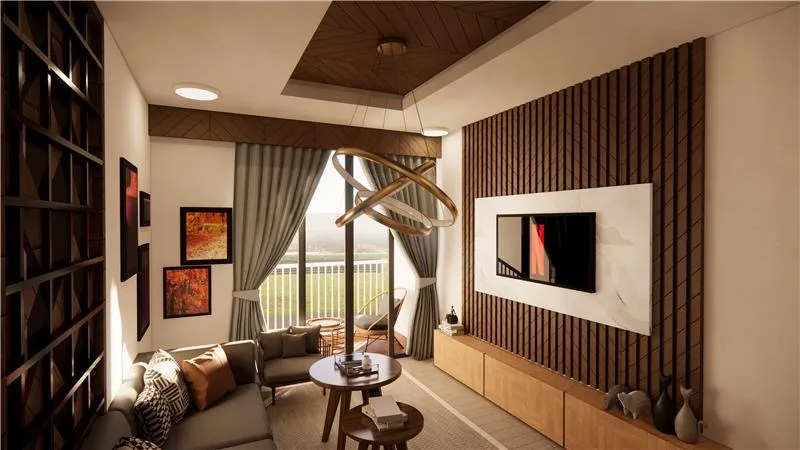
Table of Contents
The virtual experiences have become increasingly popular across various industries. One technology that has revolutionized the way we explore virtual spaces is 3D walkthrough. These services provide an immersive and interactive experience that brings architectural designs, real estate properties, and other visualizations to life. In this blog post, we will explore the ultimate virtual experience offered by 3D walkthrough services, diving into the benefits, applications, and future prospects of this cutting-edge technology.
What Are 3D Walkthrough Services?
3D walkthrough services utilize advanced computer graphics to create virtual representations of physical spaces. Through the use of high-resolution images, animations, and interactive elements, users can navigate through these virtual environments as if they were physically present. The goal is to provide a realistic and engaging experience that enables users to explore, understand, and evaluate spaces in a convenient and visually appealing manner.
The Benefits of Embracing 3D Walkthrough Services
Enhanced Visualization: 3D walkthroughs allow users to visualize architectural designs, real estate projects, or interior spaces with remarkable detail. This level of visualization helps clients and stakeholders better understand the concept, aesthetics, and functionality of the space before it is physically constructed.
Interactive Engagement: Unlike static images or videos, 3D walkthroughs offer an interactive experience. Users can freely explore the virtual space, move around, and interact with objects, providing a sense of control and immersion. This engagement helps in making informed decisions and fosters a deeper connection with the space.
Time and Cost Efficiency: Traditional methods of showcasing spaces often require physical visits, which can be time-consuming and expensive. 3D walkthrough services eliminate the need for multiple site visits by offering a convenient and cost-effective alternative. Users can explore spaces remotely, reducing travel expenses and saving valuable time.
Marketing and Sales Advantage: In industries such as real estate, 3D walkthroughs provide a competitive edge. The ability to showcase properties virtually and offer immersive experiences to potential buyers increases engagement and facilitates faster decision-making. This advantage extends to architects, interior designers, and developers, who can present their designs in a captivating and persuasive manner.
The Versatile Applications of 3D Walkthrough Services
Architecture and Construction: Architects and construction companies use 3D walkthroughs to present their designs to clients, allowing them to visualize the proposed structure in detail. It helps in detecting design flaws, refining concepts, and securing project approvals.
Real Estate: With 3D walkthroughs, real estate agents can showcase properties to potential buyers remotely. Buyers can explore every corner of the property, examine finishes, and get a feel for the space, even before visiting it physically. This technology is particularly beneficial for international buyers or individuals with time constraints.
Interior Design: Interior designers leverage 3D walkthroughs to present their design concepts to clients. It enables clients to experience the proposed layout, color schemes, and furniture arrangements, helping them make informed decisions about the interior design of their spaces.
Tourism and Hospitality: 3D walkthroughs are employed by hotels, resorts, and tourist destinations to provide virtual tours of their facilities. Prospective guests can explore rooms, amenities, and surrounding areas, giving them a taste of what to expect and aiding in their decision-making process.
The Future of 3D Walkthrough Services
As technology continues to advance, the future of 3D walkthrough services looks incredibly promising. Here are a few exciting developments to anticipate:
Virtual Reality Integration: With the growing popularity of virtual reality (VR) devices, 3D walkthroughs are expected to seamlessly integrate with VR technology. Users will be able to experience spaces in a truly immersive manner, with the ability to walk through virtual environments, interact with objects, and even feel a sense of presence.
Augmented Reality Enhancements: Augmented reality (AR) can enhance the 3D walkthrough experience by overlaying virtual elements onto the real world. This technology will allow users to visualize proposed changes or additions to existing spaces, giving them a clear understanding of how these modifications will look and function in reality.
Mobile Accessibility: The widespread use of smartphones and tablets opens up new avenues for 3D walkthrough services. Mobile applications can provide on-the-go access to virtual experiences, making it easier for potential clients, buyers, or investors to explore spaces anytime and anywhere.
Collaboration and Remote Viewing: 3D walkthroughs will facilitate improved collaboration among project stakeholders. Designers, architects, and clients can virtually meet and explore designs together, regardless of their physical locations. This collaborative approach streamlines the decision-making process and enhances communication efficiency.
Gamification Elements: To further engage users, gamification elements can be incorporated into 3D walkthroughs. Interactive challenges, quizzes, or rewards can add an element of fun and make the experience even more memorable.
Conclusion
3D walkthrough services offer the ultimate virtual experience, revolutionizing the way we explore and interact with physical spaces. From enhanced visualization and interactive engagement to time and cost efficiency, the benefits of 3D walkthroughs are extensive. With applications in architecture, real estate, interior design, tourism, and beyond, this technology has a wide range of uses. As we look to the future, the integration of VR and AR, mobile accessibility, improved collaboration, and gamification elements will further enhance the immersive nature of 3D walkthroughs. Embracing this cutting-edge technology will undoubtedly open up exciting possibilities and redefine the way we experience virtual spaces.

